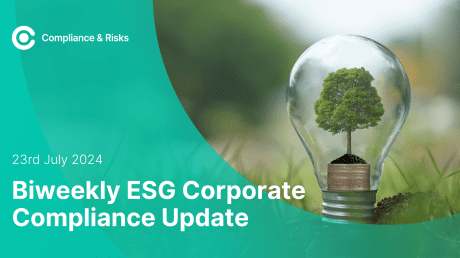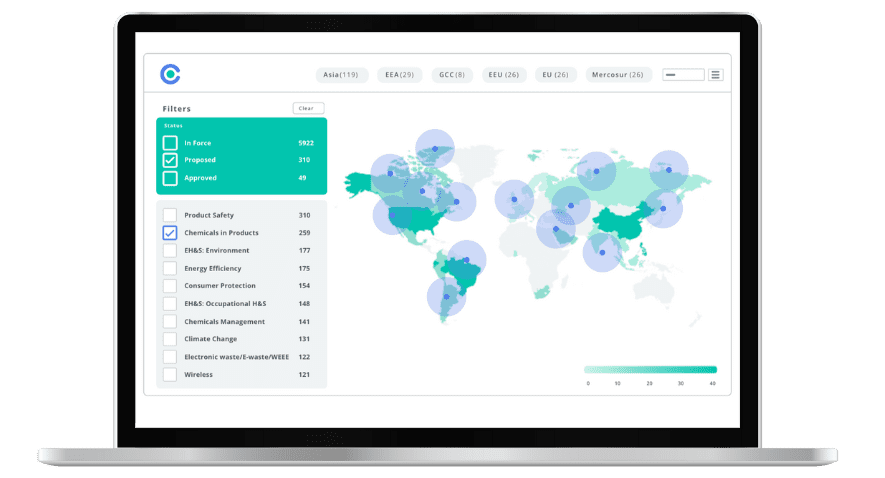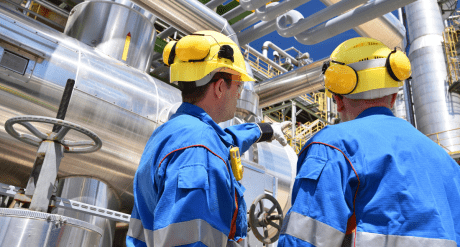
Beginning Of The EU CBAM Transition Period: What You Need To Know

This blog was originally posted on 11th December, 2023. Further regulatory developments may have occurred after publication. To keep up-to-date with the latest compliance news, sign up to our newsletter.
AUTHORED BY CELIA LE LIEVRE, SENIOR REGULATORY & REQUIREMENTS COMPLIANCE SPECIALIST, COMPLIANCE & RISKS
A number of queries concerning the application of the EU’s Carbon Border Adjustment Mechanism (CBAM) were recently submitted to Compliance and Risks via our Ask Our Experts platform.
The deadlines are looming and this new mechanism can be particularly stressful for importers. These concerns come as no surprise: October 1, 2023 marked the beginning of the transition period during which importers are required to report the emissions embedded in the CBAM goods they import in the EU.
In this short blog, C&R briefly provides an overview of CBAM obligations during the transitional period (2023-2025) and beyond.
This blog is not exhaustive. For more detailed information please consult the EU Commission’s CBAM website.
Products In Scope Under CBAM
The CBAM is an environmental policy instrument which aims to support the EU climate ambitions of achieving climate neutrality by 2050. The mechanism is established by Regulation (EU) 2023/956 (CBAM Regulation) and further clarified by implementing acts.
Similar to the ETS, the CBAM is based on a system of certificates to cover the embedded emissions in products imported from third countries.
The CBAM will be phased in over a number of years, starting with a transitional period which will run until 31 December 2025. In its initial phase, the CBAM applies to the import of a limited number of carbon-emission intensive products. The products in scope, identified by their CN code in Annex I, essentially include cement, iron and steel, aluminum, fertilizers, electricity and hydrogen.
The list of CBAM goods will likely expand to include other products such as organic chemicals and polymers. By 2030, the scope of the CBAM should be enlarged to cover all products subject to the ETS.
Obligations During The Transitional Period
October 1, 2023 is a very important date for importers as it marks the beginning of the CBAM transition period. During the transitional phase, importers will be required to quarterly report embedded emissions in their imported products during the previous quarter of the calendar year.
The first quarterly report (covering the period from October to December 2023) must be submitted to the CBAM Transitional Registry by 31 January 2024. The last report covering the period from October to December 2025 is due by 31 January 2026.
The report shall cover both direct and indirect emissions as well as any carbon price effectively due abroad. More specifically, the report shall contain information on the quantity of imported goods, the total embedded emissions (in Co2 per tonne), the quantity of indirect emissions and carbon price paid in the country of origin.
Direct emissions typically include emissions generated during the manufacturing process of goods, including emissions from the production of heating and cooling consumed during the production processes. Indirect emissions, on the other hand, are emissions resulting from the production of electricity consumed in the manufacturing process.
During the transitional period, importers will not be required to purchase certificates to offset emissions. The financial obligations of the CBAM will apply from 1st January 2026 (see section below, What’s next.)
Note: the rules governing the transitional phase are set out in the Commission Implementing Regulation (EU) 2023/1773.
Calculation Of Embedded Emissions
As we have now entered the transitional phase of the CBAM, companies will need to deal with complex procedures to calculate emissions embedded in imported products. Embedded emissions include both direct emissions and indirect emissions.
The CBAM Regulation provides that the rules for calculating embedded emissions in goods shall be determined based on the methods set out in Annex IV (points 2 and 3). The approach to calculation during the transition period is further detailed under Articles 4 and 5 of Implementing Regulation (EU) 2023/1773.
The method is extremely complex and depends on the specific production process. In short, during the transitional period (until 31 December 2024), declarants may use one of the following methods:
- carbon pricing scheme where the installation is located; or
- a compulsory emission monitoring scheme where the installation is located; or
- an emission monitoring scheme at the installation which can include verification by an accredited verifier.
As of 1st January 2025, the so-called “EU method” must be used to calculate direct emissions. Under the EU method, declarants may use either:
- the calculation-based methodology (which consists in determining emissions from source streams on the basis of activity data obtained by means of measurement systems and parameters from laboratory analysis or standard values)
- the measurement-based approach which consists in determining emissions from emission sources by means of continuous measurement of the concentration of the relevant greenhouse gas in the flue gas and of the flue gas flow.
Alternative methodologies (i.e. default values to be published by the EU Commission or default values listed in Annex III), may be used until 31 July 2024 for applicants who do not have certain information necessary to complete the above calculation methods (see information listed in Article 3(2) and (3) of Implementing Regulation (EU) 2023/1773).
Rules for determining the embedded indirect emissions of electricity as an input for the production of goods other than electricity can be found in Annex III.
Detailed guidance on how embedded emissions must be calculated during the transitional period is provided in the CBAM guidance for importers.
What’s Next?
As of 1st January 2026, the CBAM will fully apply. From this date, importers must declare the quantity of goods imported into the EU and their embedded emissions. The first CBAM declaration, in respect of the calendar year 2026, must be submitted by 31 May 2027. The CBAM declarations must be verified by an accredited verifier.
In addition to filling a declaration, declarants shall also purchase and surrender certificates to offset the declared emissions. The certificates must be surrendered via the CBAM registry by 31 May of each year, starting in 2027 for the year 2026.
An important point to remember is that certificates can only be purchased from the authority of the Member State where the declarant has been authorized. CBAM certificates will be sold by Member States through a common central platform managed by the EU Commission.
According to the EU Commission, the price of certificates will be closely aligned with the price of ETS allowances, expressed in €/tonne of emitted CO2 emissions. Note that there will be a phase-in with increasing coverage of embedded emissions by the CBAM obligation from 2026. The full embedded emissions will only be covered from 2034 onwards.
Checklist For EU Importers
The EU Commission shared the following checklist to help importers navigate through the CBAM.
- CHECK if goods you import are listed in Annex I to the CBAM Regulation and GET IN TOUCH with the National CBAM Competent Authority (NCA) in the country where you are established.
- REGISTER through your NCA for the CBAM transitional registry where you or your representative will upload quarterly reports on emissions embedded in imported goods.
- ENSURE your trading partners outside the EU are aware of the detailed guidance provided by the European Commission on the goods in scope and how to calculate embedded emissions.
- FOLLOW the general and sector-specific training material and modules made available by the European Commission to make sure you know what to expect from the new reporting rules & tools.
- SUBMIT your first quarterly CBAM report by 31 January 2024 covering your imports in the fourth quarter of 2023 and STAY TUNED to our dedicated website for the latest developments as we prepare for the definitive phase in 2026.
The above checklist was drafted by the EU Commision and retrieved from the EU official CBAM webpage.
Stay Ahead Of Regulatory Changes
Accelerate your ability to achieve, maintain & expand market access for all products in global markets with C2P – Your key to unlocking market access, trusted by more than 300 of the world’s leading brands.
C2P is an enterprise SaaS platform providing everything you need in one place to achieve your business objectives by proving compliance in over 195 countries.
C2P is purpose-built to be tailored to your specific needs with comprehensive capabilities that enable enterprise-wide management of regulations, standards, requirements and evidence.
Add-on packages help accelerate market access through use-case-specific solutions, global regulatory content, a global team of subject matter experts and professional services.
- Accelerate time-to-market for products
- Reduce non-compliance risks that impact your ability to meet business goals and cause reputational damage
- Enable business continuity by digitizing your compliance process and building corporate memory
- Improve efficiency and enable your team to focus on business critical initiatives rather than manual tasks
- Save time with access to Compliance & Risks’ extensive Knowledge Partner network

Our Biggest Webinar Of The Year Is Back
Regulatory Trends In Product Compliance & What To Expect In 2024 will review 2023’s biggest shifts in product compliance and look ahead to 2024








